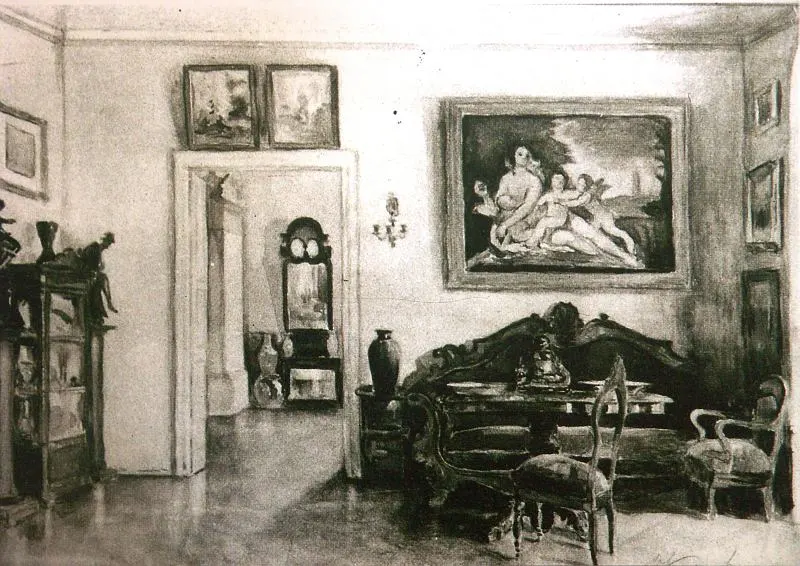The museum in Płock was created in 1821
The museum in Płock was created in 1821 as an initiative of the members of the Płock Scientific Society, on the basis of a rescript no. 1/7097 of the Government Committee of Religious Worship and Public Education of the Kingdom of Poland. It is the oldest public museum in the country, created by means of decision of the Kingdom of Poland‘s authorities. The institution was named the “Publicand Scholar Museum of the Płock Voivodeship”, which depicts the origins of the collection, created by combing groups of objects of historic, geological and scientific value, gathered by the members of the Płock Scientific Society and the Płock Provincial School. The exhibits were placed in two large rooms of the school’s bulding (currently the Marshal Stanisław Małachowski High School resides there), as a result of which, they could serve as educational objects as well as be presented to visitors.

Resumption
The museum existed until 1836, by the end of the 1830s its activity ceased completely. The activity was resumed in 1907, together with the reactivation of the Płock Scientific Society, the statute of which included the creation of this type of institution. In order to realize its educational and scientific tasks, in 1908 the society bought a tenement house at 8 Rynek Kanoniczny (currently 8 Plac Narutowicza Square). In its two ground floor rooms, opened for the visitors in 1912, the museal exhibition was placed. It included geological, natural, archeological and historic objects, documenting the history of the Mazovia region. As a result of donations and the commitment of the members of the society, the museum’s collection grew quickly and in order to accommodate it in 1923 as many as 13 rooms were necessary.
In 1928 the museum was given a new name: “The Museum of Płock Mazovia of professor Ignacy Mościcki, President of the Republic of Poland”. In 1930 in order to improve its accommodation premises, the museum acquired the building at 2 Rynek Kanoniczny (currently the Zieliński Library), in which the natural, ethnographic and archeological collections af the museum were placed. Objects of historic and cultural character were still exhibited in the building at 8 Rynek Kanoniczny.

German occupation

The meticulously acquired collections of the museum suffered greatly during the German occupation. After the war, attempts were made to organize the decimated collection, which was exhibited again on 1 December 1945.
In 1949 the museum in Płock, by the decision of the Ministry of Culture and Art, was nationalized and subordinated to the National Museum in Warsaw. The institution was then named “the Muzeum of Płock Mazovia”. The 1950s and the beginning of 1960s were times difficult for the museum because of financial reasons.
The museum after war
Despite this, as a result of organizational work conducted under the supervision of Krystyna Mierzejewska (later Hejke), following departments were opened: archeology (1952), natural history (1953), geology (1954) and history (1955). New perspectives for the development of the museum appeared together with plans of industrialization of the city, connected with the construction of the petrochemical plant. A decision was then taken to rebuild and adapt the Castle of Mazovian Dukes for purposes of housing the museum. In 1963 the statue of the Płock-based institution has been created and it has been given the name of the Mazovian Museum in Płock, which is still used nowadays. In 1968, when established the profile of the museum’s activity, it was decided, that it would acquire objects connected with the history of Mazovia as well as Art Nouveau. The addition of the new specialization, connected with the art of the turn of the 20th century, was a result of an extraordinary success of the temporary exhibition “Art Nouveau in Poland”, organized in Płock in 1967. It is worth emphasizing, that this exhibition was the first museal presentation of Art Nouveau in Poland. On 16 May 1973 the grand opening of the museum in the Castle of Mazovian Dukes took place, where the new ethnographic, archeological, historic and Art Nouveau exhibitions were opened.

The museum’s exhibitions locations
In 2004 the Mazovian Museum in Płock changed its location again. The new home of the museum was tenement house at 8 Tumska Street. Inside, since 15 July 2005, the visitors can see an exhibition devoted entirely to Art Nouveau, art of Young Poland as well as the Art Déco collection. Since 2010, owning to the support granted from the funds of the European Union, a new, modern, archeological and historic exhibition based on three floors entitled “Ten centuries of Płock” has been opened. Currently, the museum’s exhibitions are located in the following places:
- 8 Tumska Street – Art Nouveau, Young Poland, temporary exhibitions
- 8A Tumska Street – the history of Płock
- 6 Kolegialna Street – Art Déco, temporary exhibitions
- 11B Kazimierza Wielkiego Street, the granary – ART OF THE FAR EAST PŁOCK THREASURES OF BUDDHIST ASIA / Culture of Mazovia in folk vision of the world
- 7 Kwiatka Street – the Museum of Mazovian Jews
- Wiączemin Polski 25, 09-533 Słubice – Open-air Museum of the Vistula Settlement in Wiączemin Polski
- 1 Rynek Square, 09-450 Wyszogród – The Vistula Museum in Wyszogród
